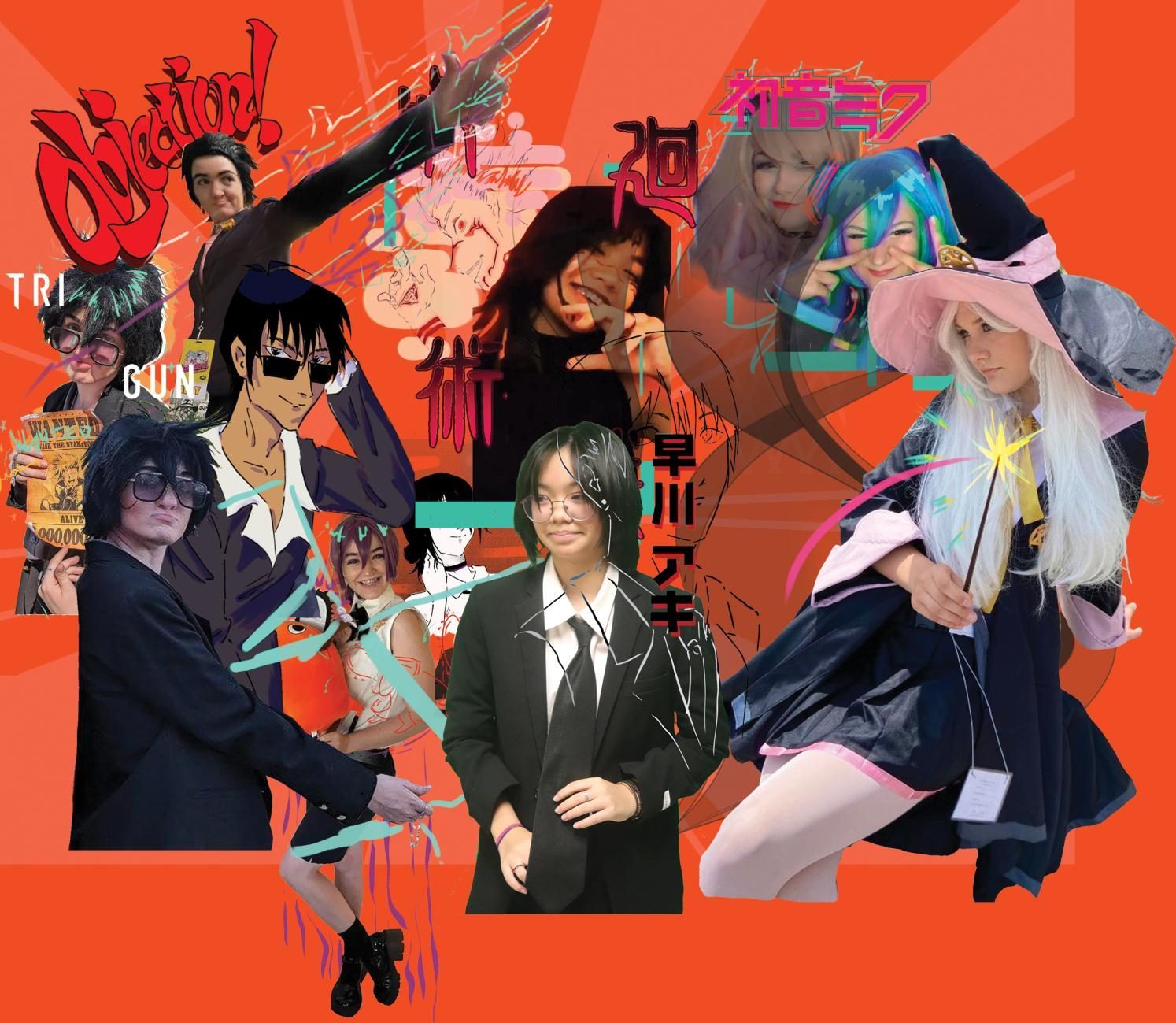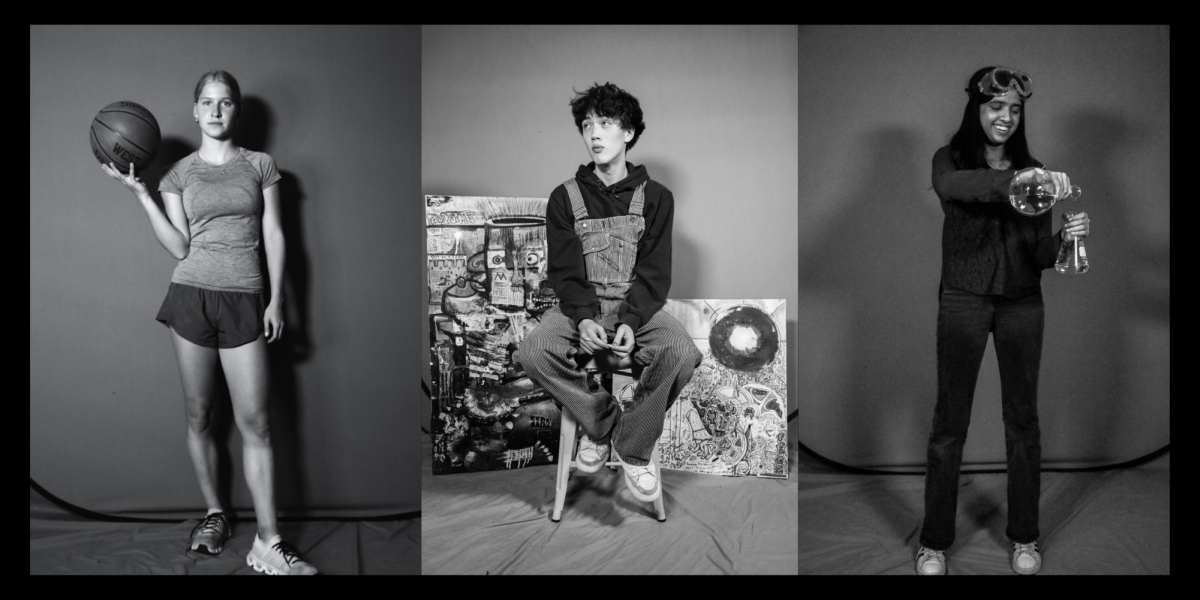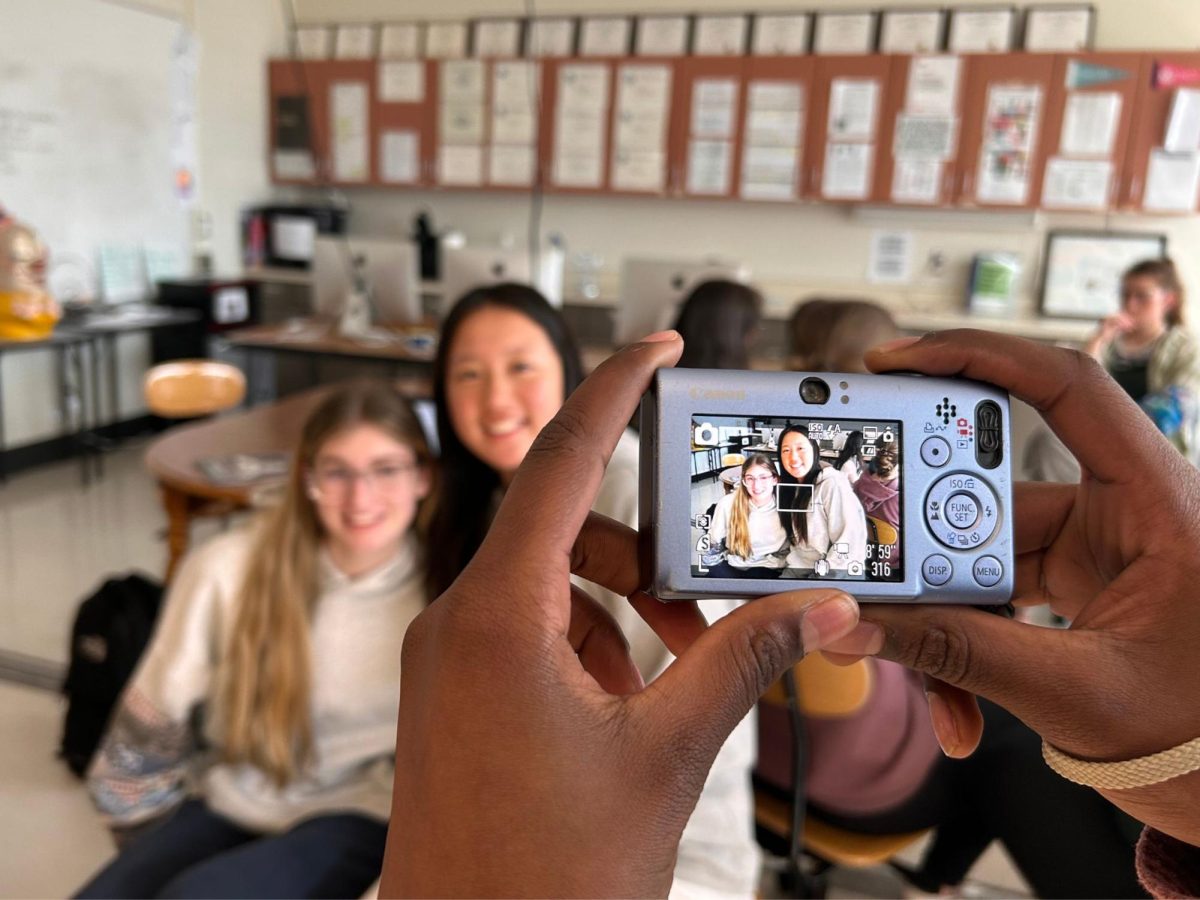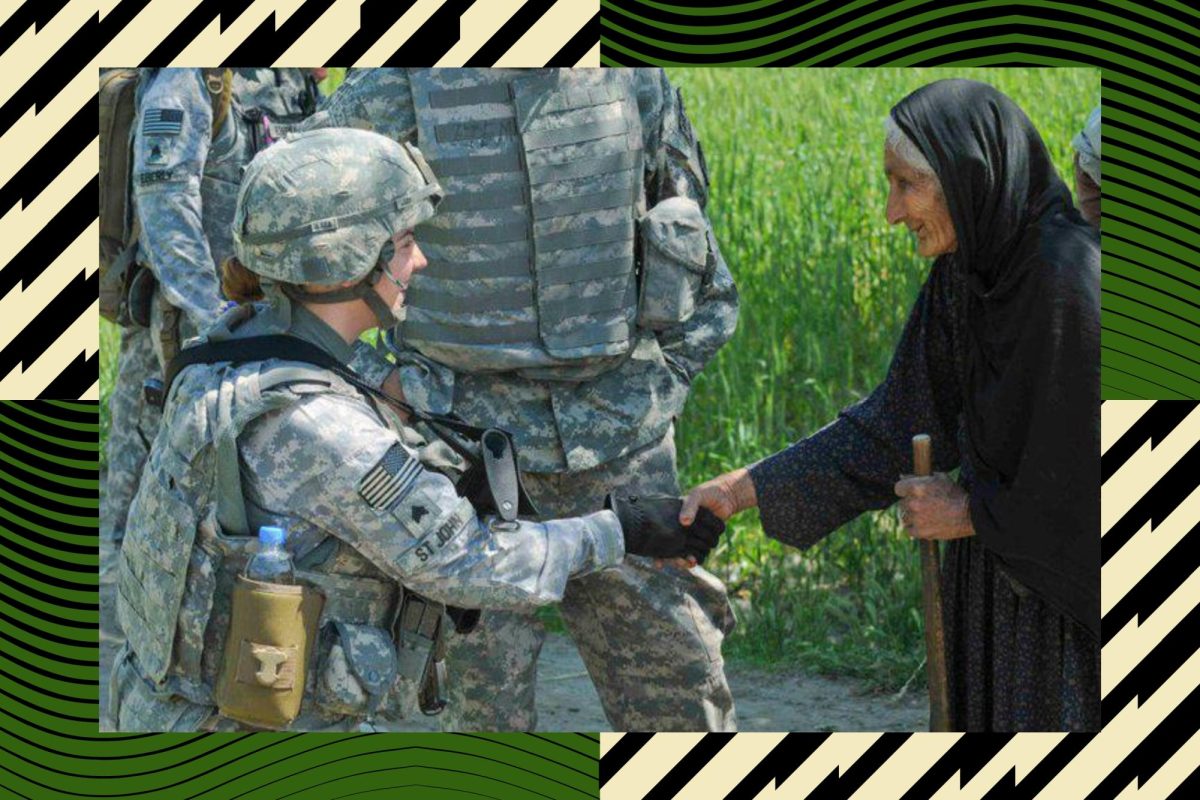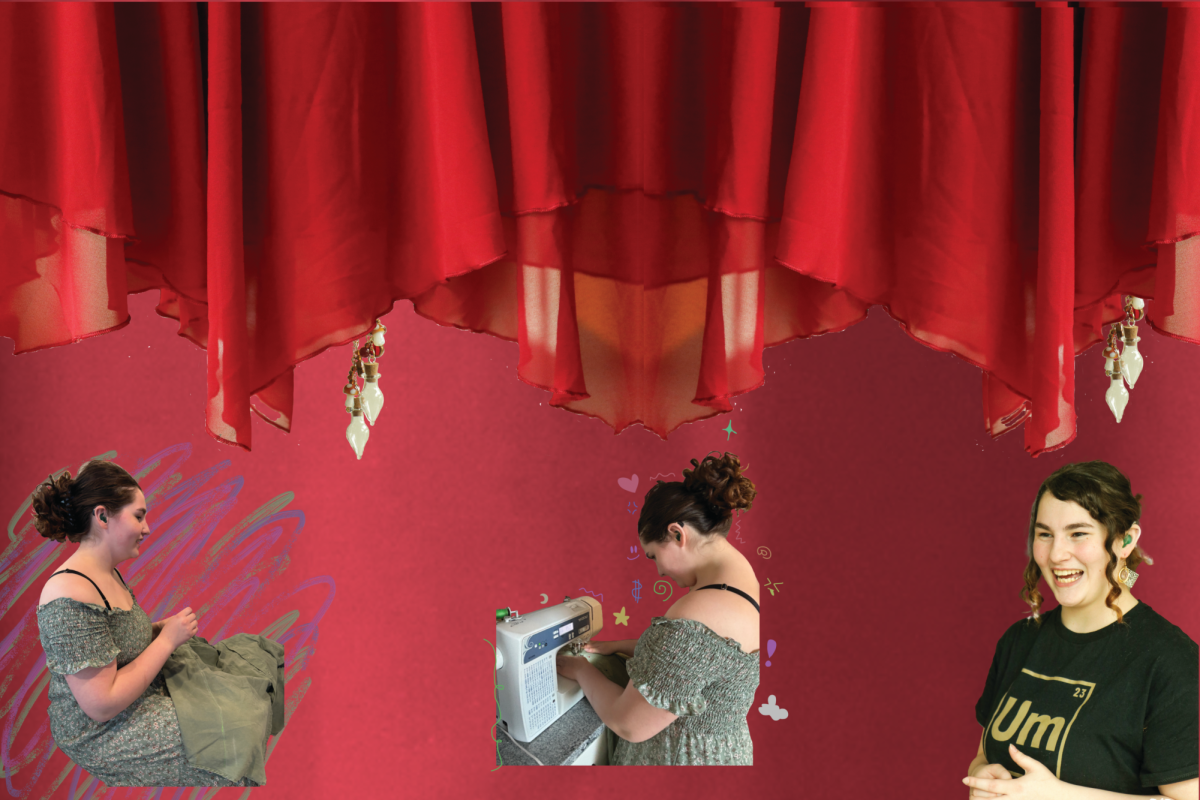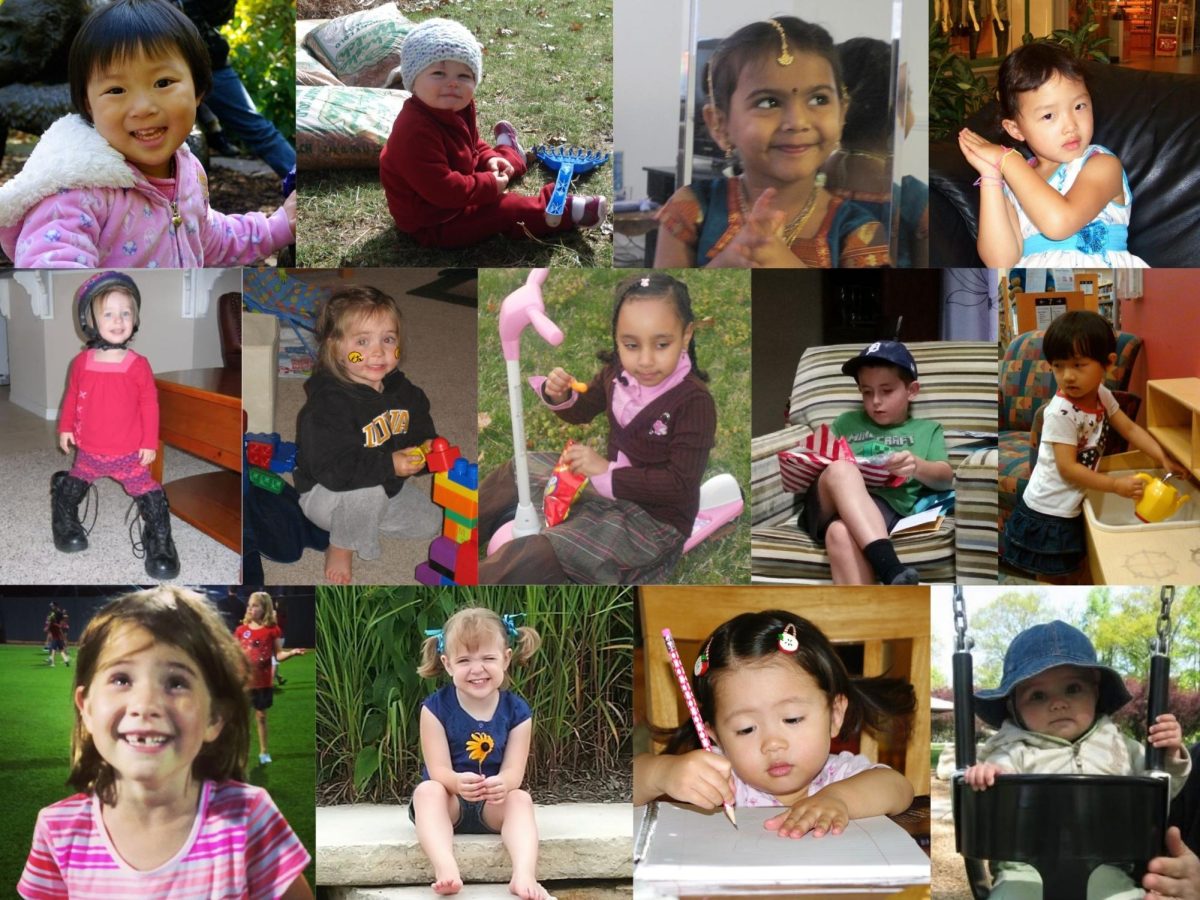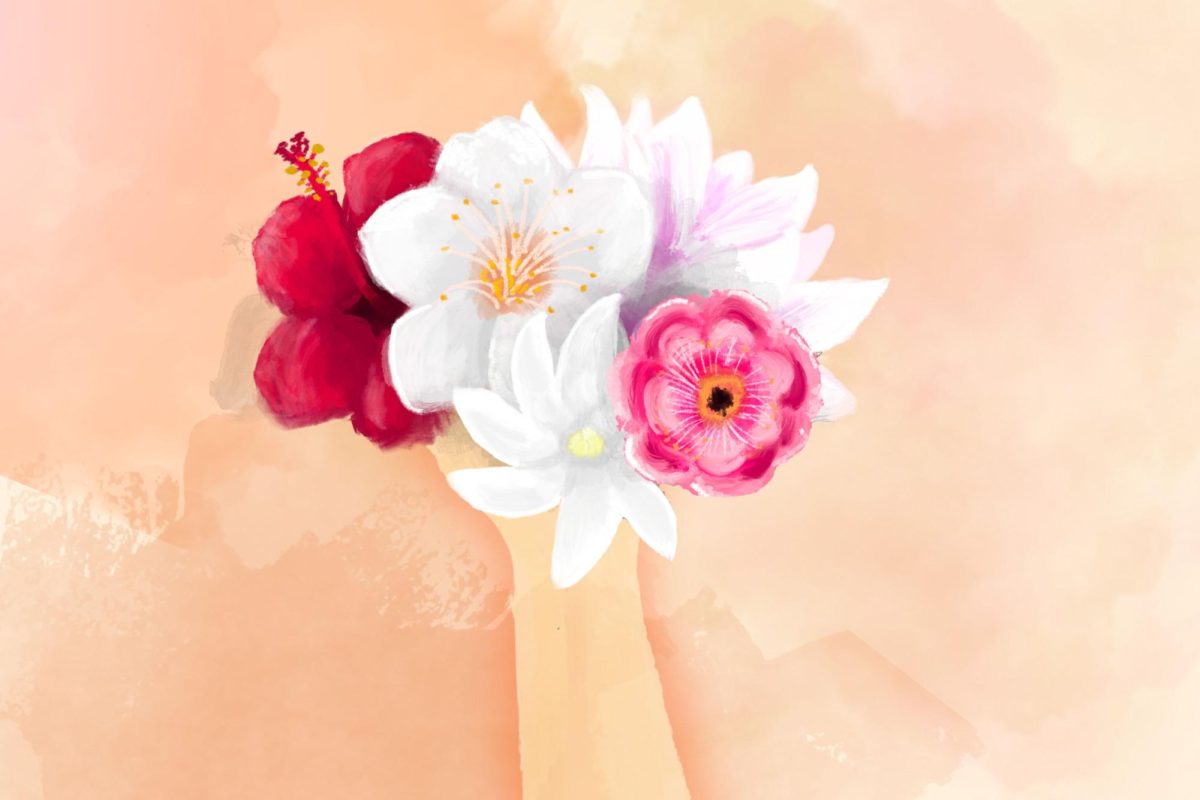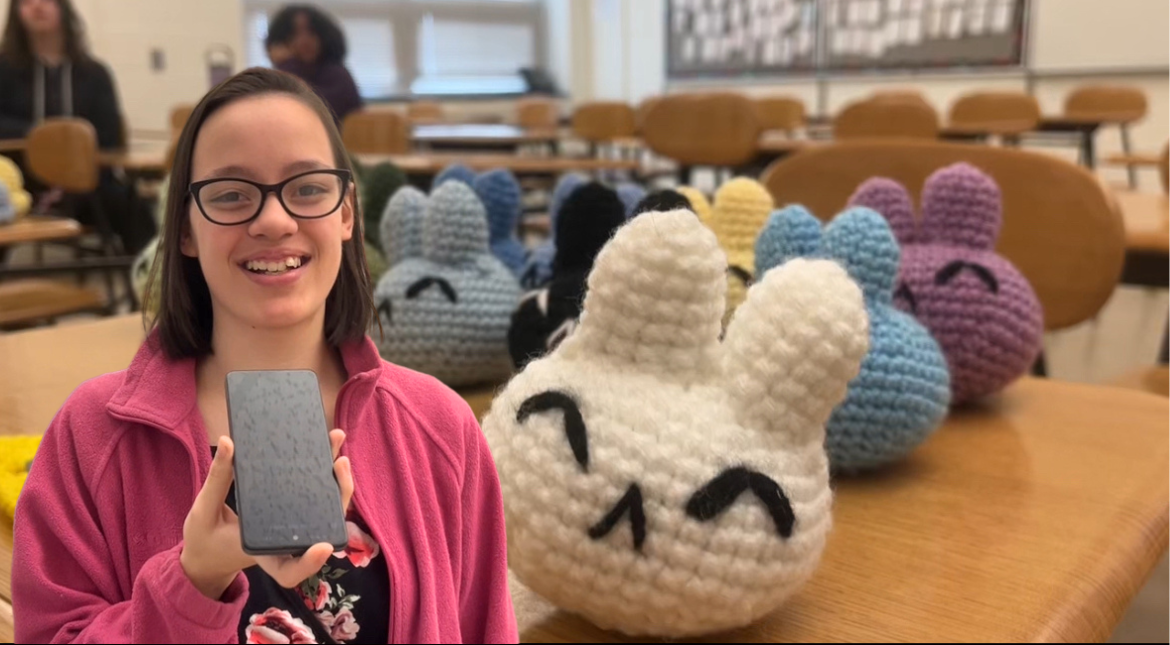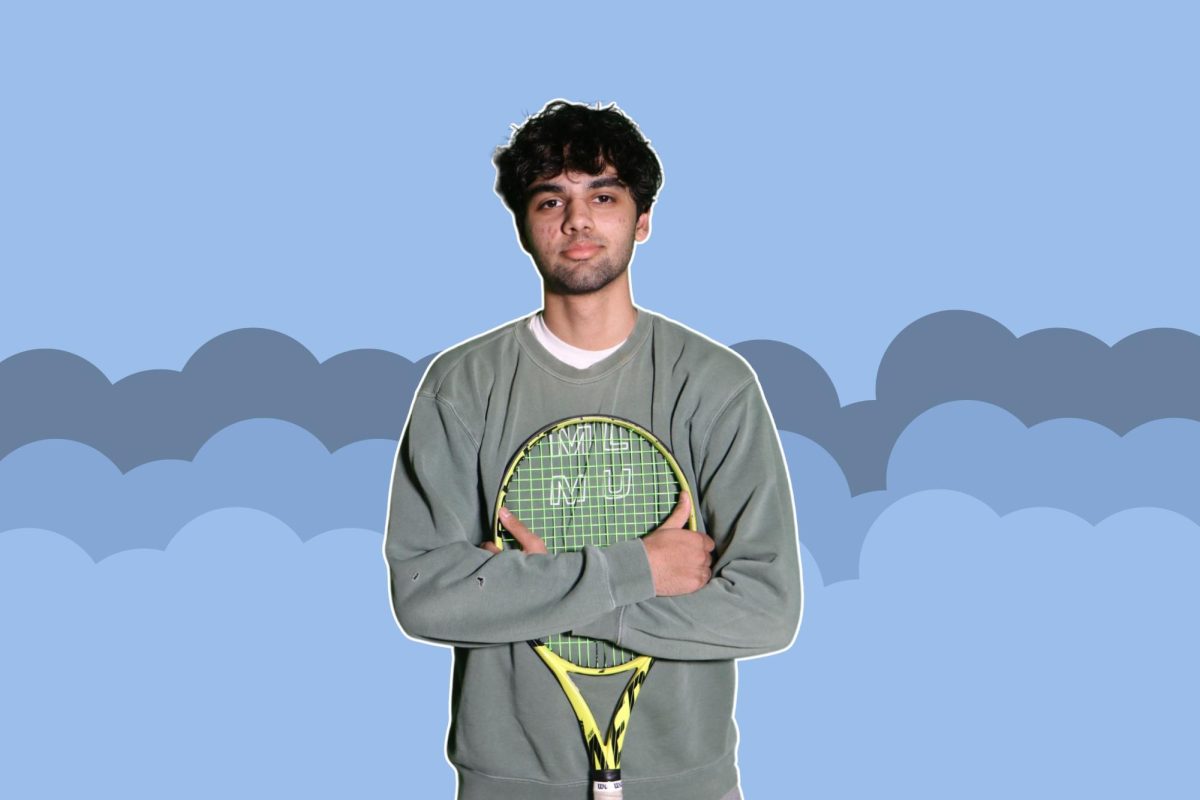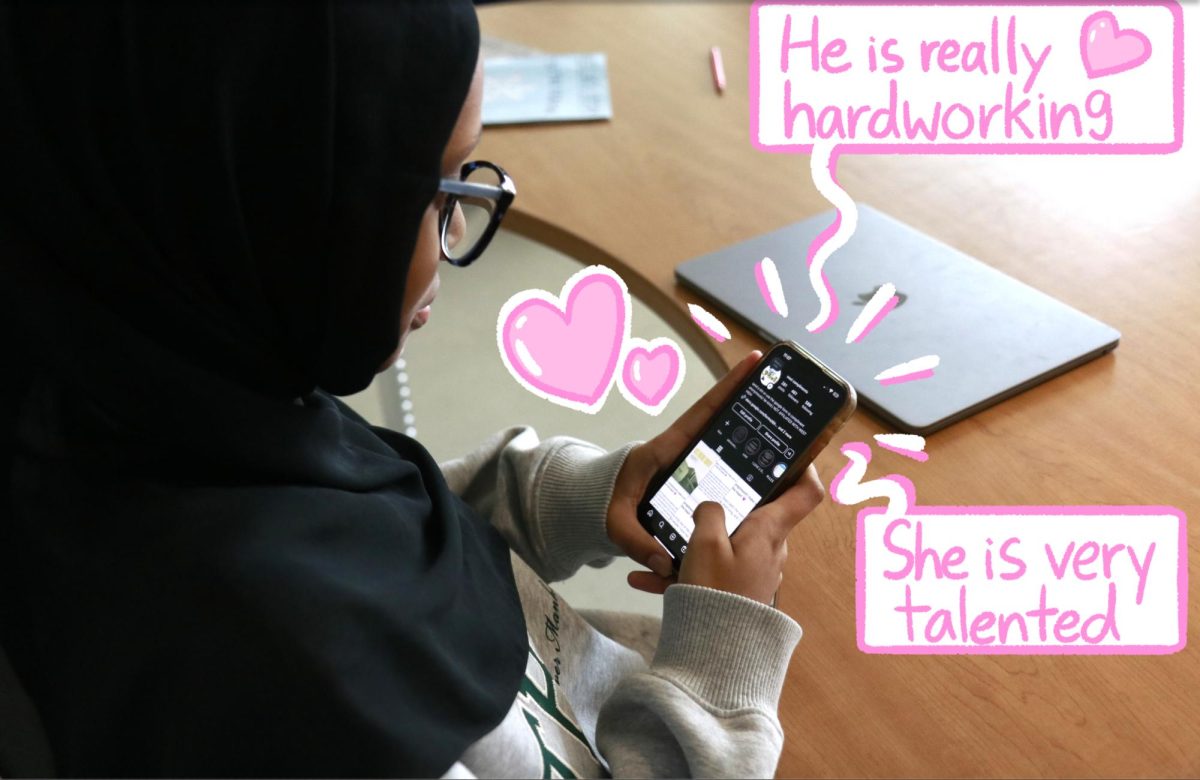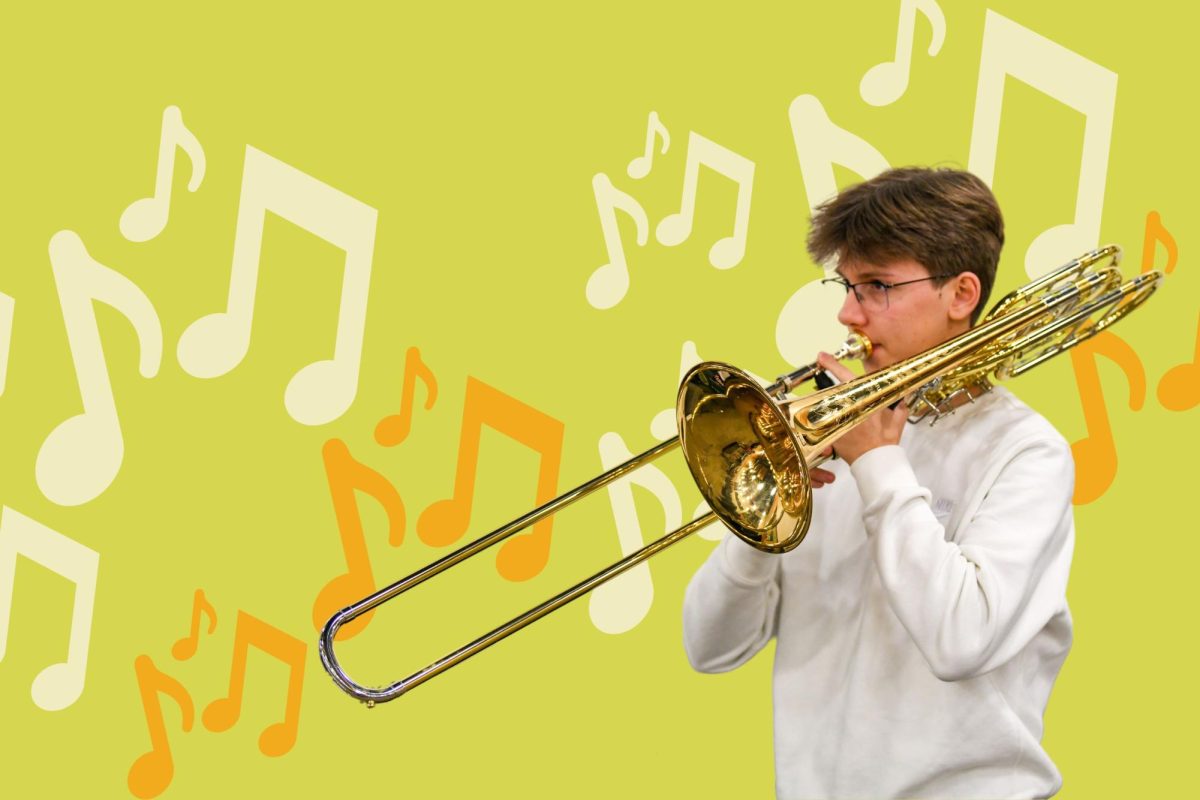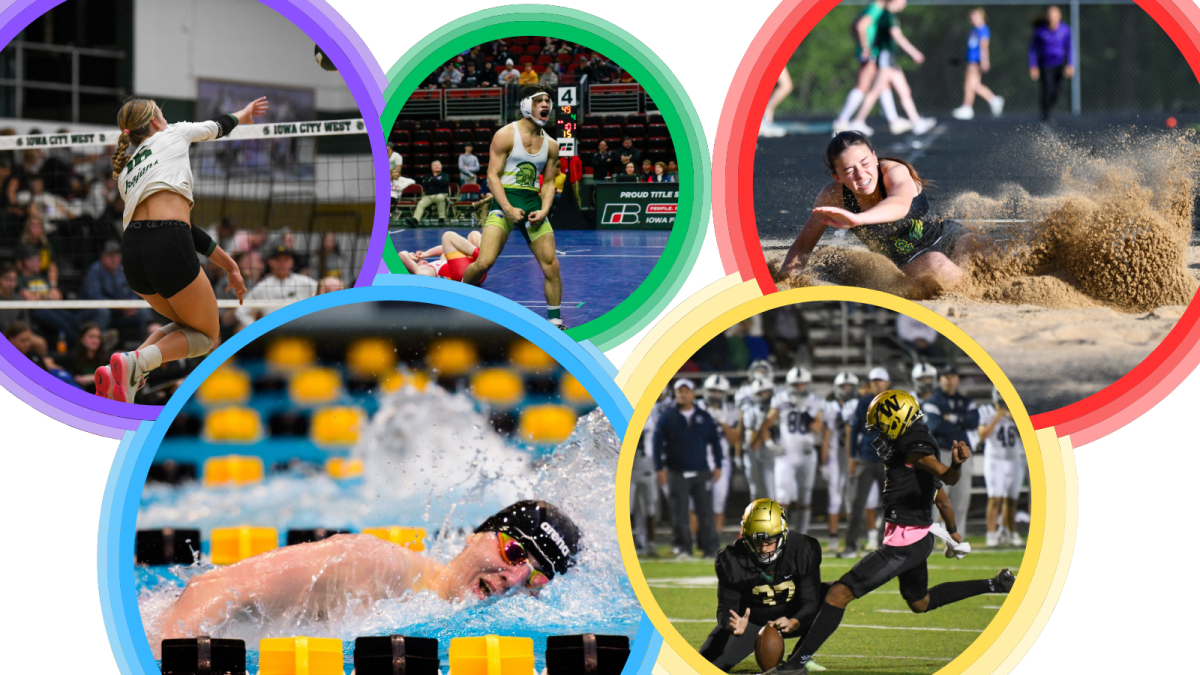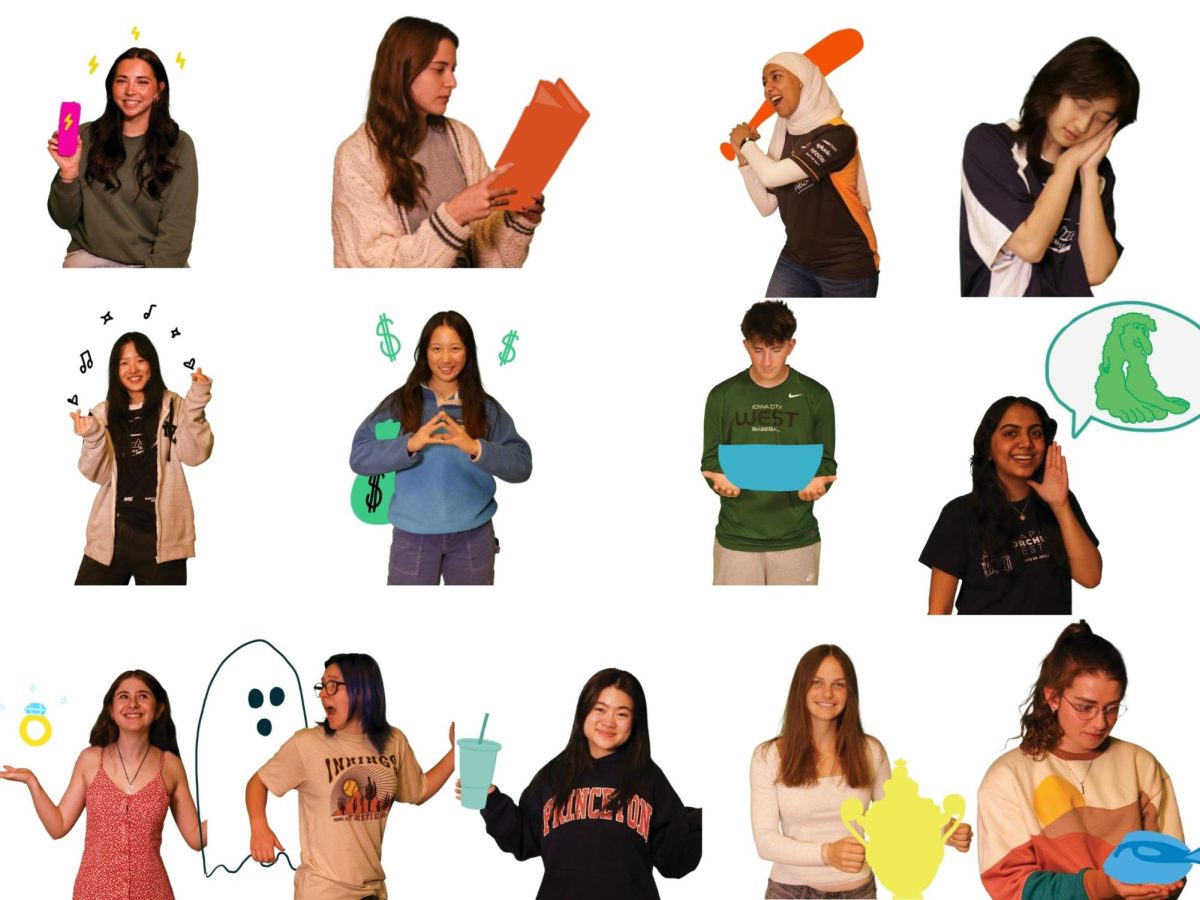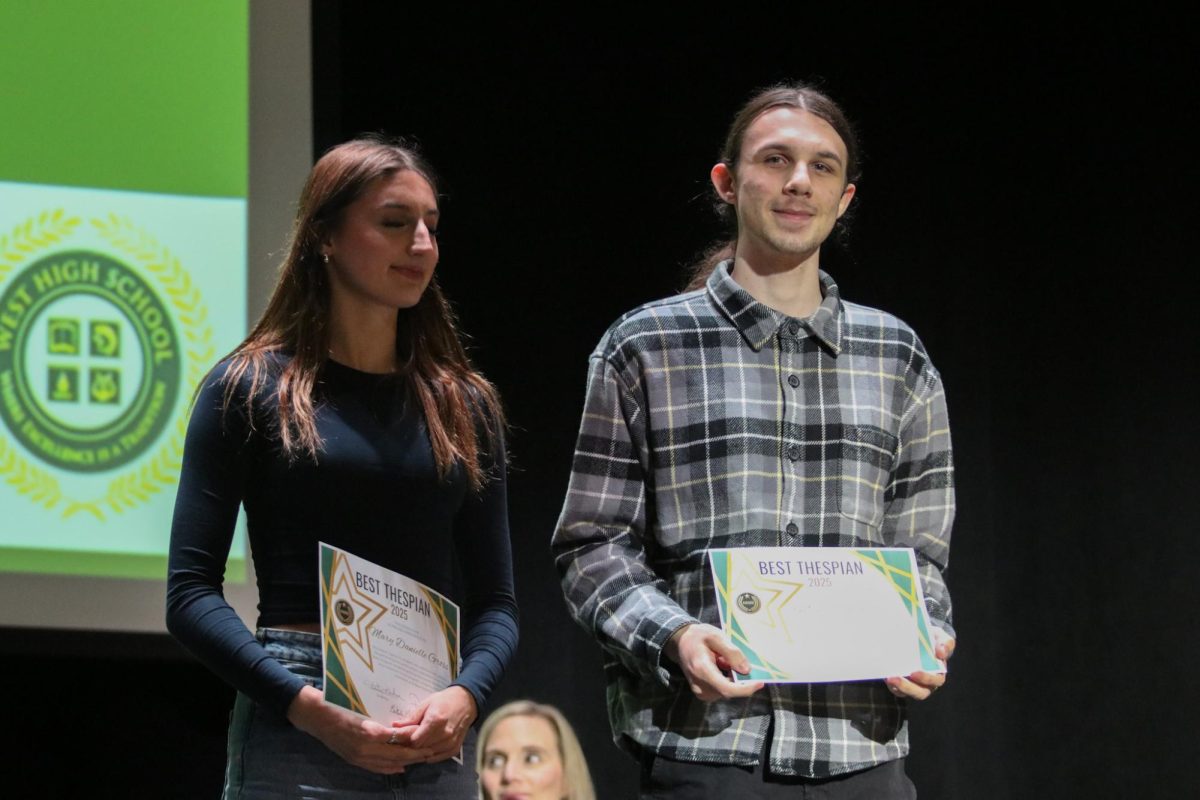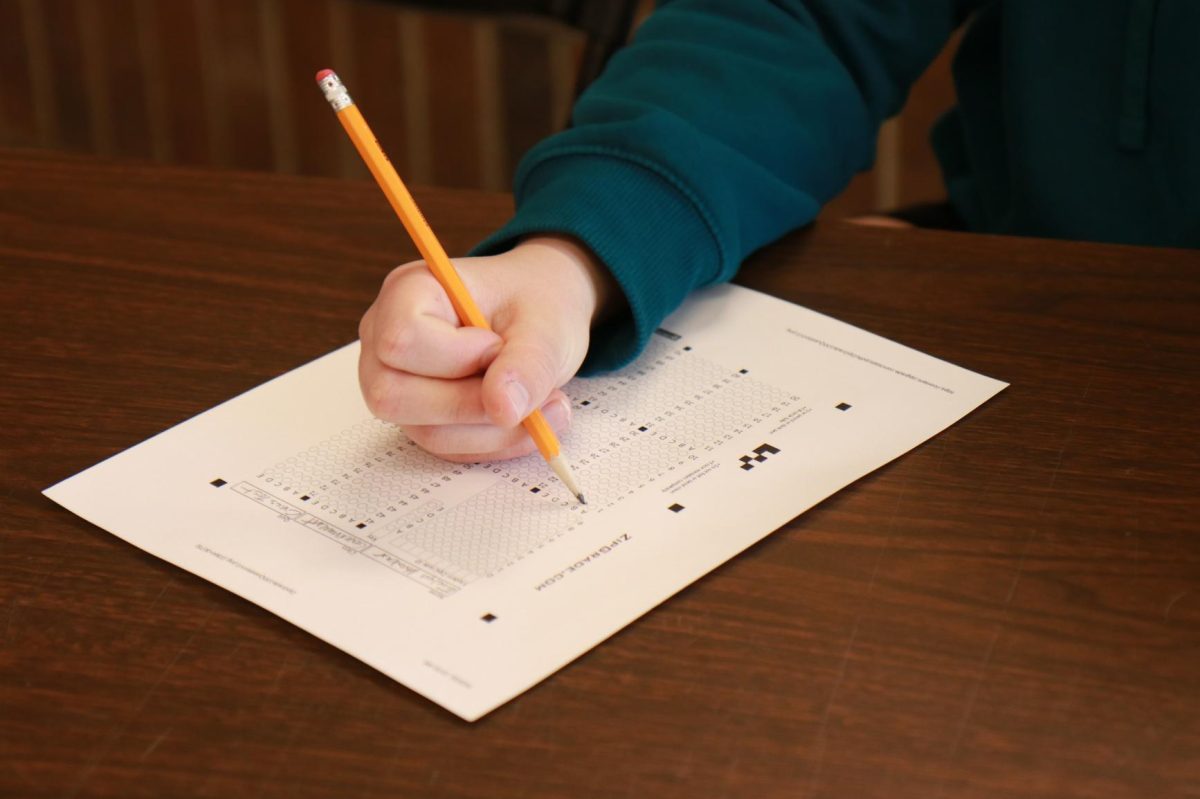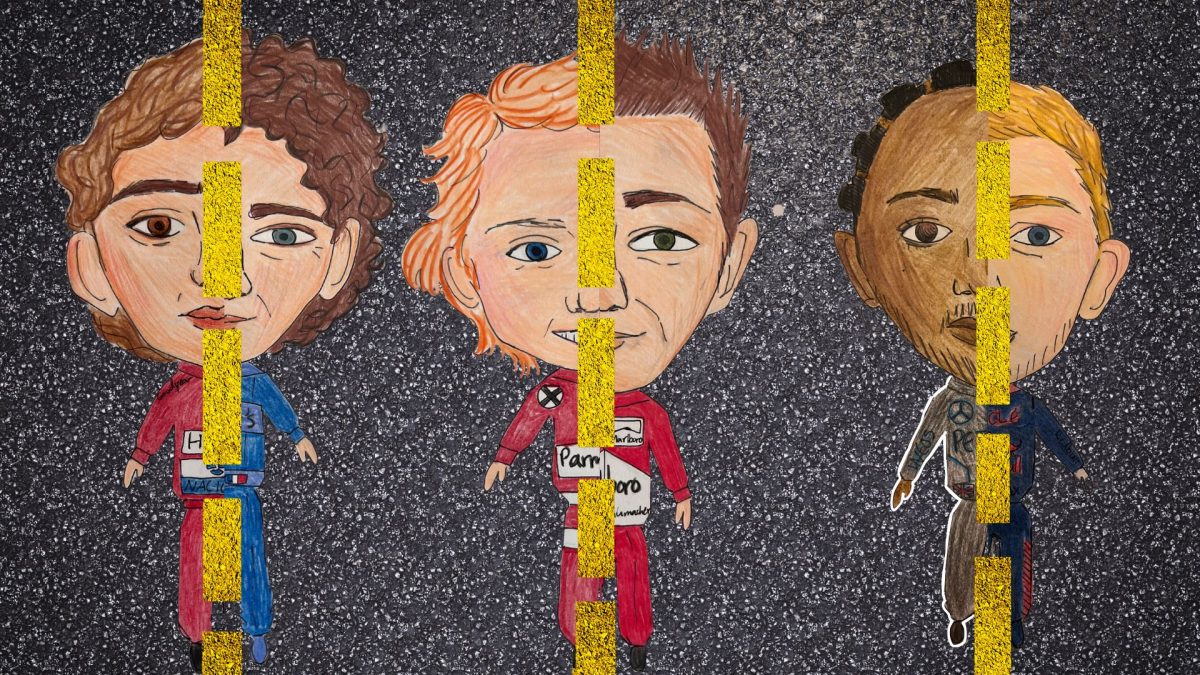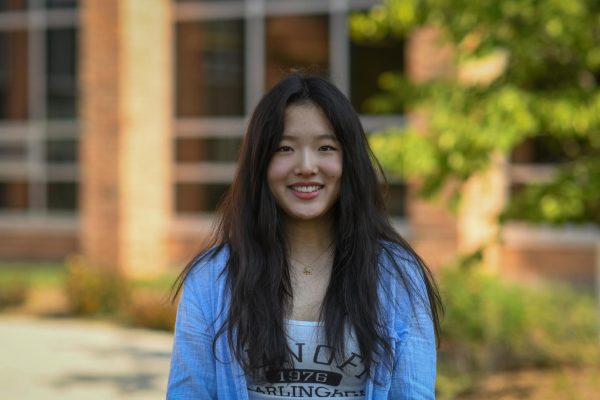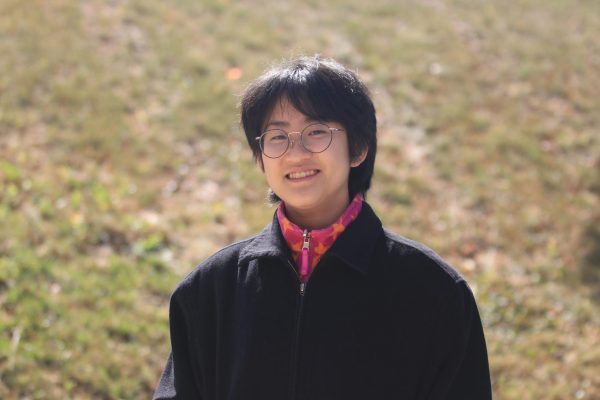Jet-black hair, tinted sunglasses, a simple black suit with a dress shirt open at the collar and a comically large gun are only a few notable characteristics that distinguish Trigun Stampede protagonist Nicholas Wolfwood. Some have watched him on television, while others have seen him walking down the street. This blend of fiction and reality is just one glimpse into the world of cosplay, a multifaceted art form that combines self-expression, craftsmanship and performance into a dynamic community. Cosplay, short for “costume play,” involves individuals dressing up and imitating mannerisms of characters featured in media, such as movies, video games and anime. Originating in Japan in the early 1980s, cosplay has risen in popularity from the widespread use of social media platforms.
Carly Ephraim ’24, Anika Nguyen ’25 and River Small ’26 all share a common introduction to cosplay: the COVID-19 pandemic. TikTok’s growing influence led them to view more cosplay content through various online creators. For them, the hobby is an ever-evolving skill that develops with time and experience.
“Cosplay is expressing yourself through design and being someone you feel comfortable [being],” Ephraim said. “It entails wigs, makeup and making and sewing [costumes]. It’s really cool to see people put their own twist [to] it.”
Given Ephraim’s passion for dressing up and love of fiction media, they embraced the opportunity cosplay provides to experiment with self-expression.
“I used to do what is called a closet cosplay. I got things out of my closet and made an outfit for a character. I started posting TikToks, people started liking [them], and I was like, ‘This is really cool,’” Ephraim said. “I like to cosplay because I think it’s really fun to dress up like my favorite characters; I’ve always loved Halloween. It’s very cool to express myself, besides how I normally dress, through makeup and creativity.”
Ephraim and Nguyen value the freedom cosplay allows in interpreting characters.
“My favorite aspect of cosplay is being able to express a character the way that I see them. I don’t go for accuracy, I go for how I want to cosplay them,” Ephraim said. “I made my own unique makeup style on TikTok, where I match my eyeshadow color and color contour on my nose to the [color I associate the] character with.”
Despite their mutual enthusiasm for cosplay, Nguyen acknowledges its drawbacks: the expense and time commitment.
“When I first started cosplaying, I did not have a job, so I had to work with what I had. Most of my costumes are homemade,” Nguyen said. “Some characters are simpler than others because [they] are realistic, while others are fantasy. I spent a month [designing a] costume and the props. It’s not too much time compared to [what] some people put in, but it’s still hefty for a high school student.”
Cosplaying characters with cultural identities different from one’s own can raise concerns, including cultural appropriation. This is when individuals from a majority group adopt cultural elements from a marginalized group in ways that can be exploitative, disrespectful or stereotypical. Ephraim describes the influence of a specific form of cultural appropriation in the cosplay community known as “Asian Fishing,” where people mimic an Asian appearance for aesthetic purposes.
“There is a character who [wears] a kimono, and people were cosplaying her and wearing the kimono wrong and being disrespectful. People started educating others [by making] TikToks like, ‘Hey, this is how you wear a kimono’ or ‘You can cosplay her in a different outfit’ or ‘You can wear a short kimono because short kimonos aren’t considered traditional,’” Ephraim said. “People are constantly learning and constantly changing. We don’t support people who [culturally appropriate].”
While social media has the potential to provide information, it can also have detrimental effects. Ephraim, known as @cardboarcos on TikTok with over 18,000 followers and 341,000 likes as of Nov. 2, creates cosplay content featuring trending audio and dance routines. Yet, their social media audience subjects them to judgment and hurtful comments. For their mental health, they have restricted comments to only their friends.
“People think it’s weird. They are like, ‘What is this? You’re ugly. You don’t look like blank.’ People expect you to be beautiful if you want to cosplay [a] person,” Ephraim said. “People don’t usually [leave negative comments] if it’s a young cosplayer, but as I get older and more experienced, people hold me to a higher standard. Like, ‘Oh, you’re older. You should know better. You should know that this is not right.’”
While cosplaying publicly, Small has observed that these comments originate from harmful generalizations. These stereotypes include the belief that cosplayers have an obsession with anime and a fixation on fan service, which is content aimed at pleasing the audience, often sexual in nature.
“A big misconception is that all of [cosplay] is sexualized. In the media, people who randomly see cosplayers see the extremely sexualized side of it,” Small said. “A couple of years back, a YouTuber [Belle Delphine] used to do cosplay sometimes, and she was incredibly sexualized. She was pretty mainstream, [so] I feel like people correlate her with cosplay.”
Due to the negative stigma surrounding the art form, Nguyen has lacked the confidence to cosplay in public.
“[People are judgemental] because it’s not part of the social norm to dress [differently],” Nguyen said. “Cosplay is also associated with anime in a negative way, often with questionable fans, so people loop everyone into that label.”
Amid these challenges, Small emphasizes simply enjoying cosplay and the importance of personal growth within the hobby.
“At the end of the day, it’s not about what the public cares about, as long as you’re having fun. Cosplay is very expensive, so you can start out by just using your own clothes or your own hair and keep progressing,” Small said. “It’s a learning curve. Don’t give up because you feel like you’re not as good as other people who have been doing it for years.”
At the heart of cosplay is a strong sense of community, where participants often collaborate on coordinating their attire. This camaraderie extends to cosplay conventions, or cons, where fans can network, connect with creators and explore merchandise from vendors. Ephraim attended Animate! Des Moines 2023 and won their first costume contest as Nicholas Wolfwood.
“[Attending cosplay conventions] has impacted [my] confidence [because] many people [give] compliments and take pictures,” Ephraim said. “I’ve also met a lot of cool people at cons; I’ve made friends. It’s a very welcoming environment. You don’t feel like you stick out. You get to bond with people who share the same interests and make amazing memories.”
Ephraim appreciates the inclusivity of cosplay, emphasizing how there is no wrong way to participate.
“Anyone can cosplay no matter skin color, height [or] weight. You express yourself how you want to express yourself because you are unique. You’re making this character unique because it’s your way of viewing them,” Ephraim said. “Everyone is going to look different. There is no set way; you don’t have to look exactly like [the character]. Even if you don’t get recognized, you’re still doing you. Keep doing you.”

